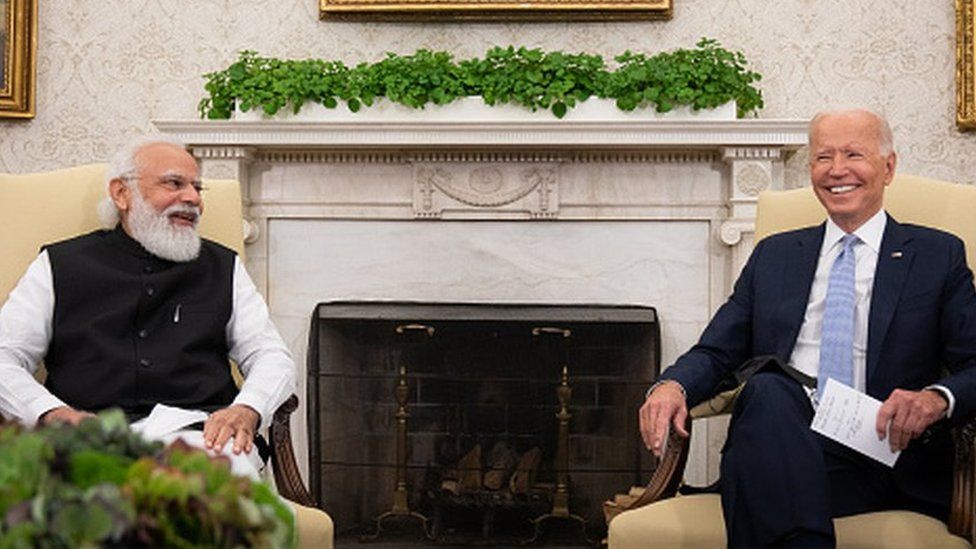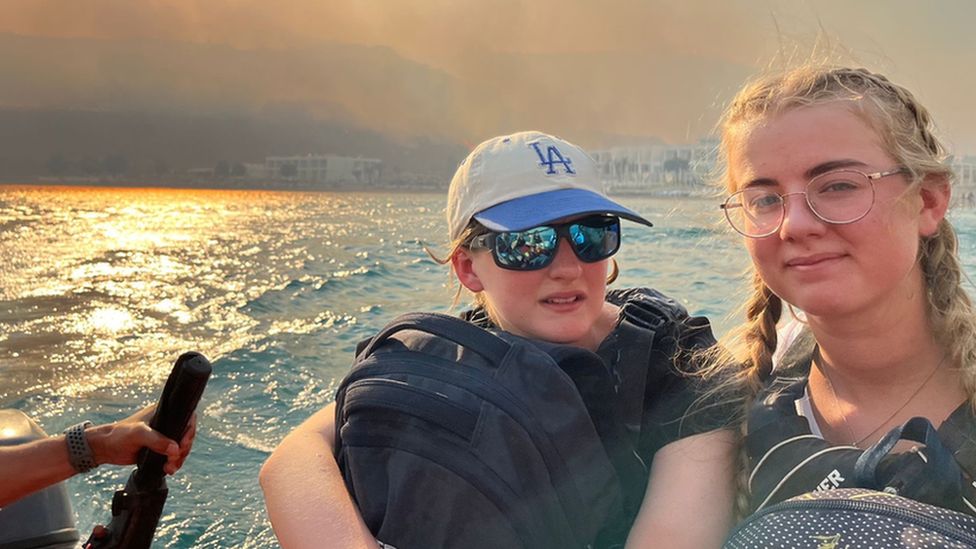The visit of Indian Prime Minister Narendra Modi to the US has taken on a lot of significance in the face of geopolitical and economic challenges worldwide.
It's a state visit, the highest level of diplomatic etiquette the US accords visiting leaders, so the White House is making every effort to welcome Mr. Modi. On Thursday, Mr. Modi will receive a formal welcome at the White House before having face-to-face discussions with President Joe Biden.
The state dinner, a gathering of CEOs, a speech to the joint session of Congress, and addresses to Indian-Americans are additional highlights of Mr. Modi's previous US visits.
Behind the meticulously planned ceremonies, however, are discussions that could not only revitalize India-US relations but also have an impact on the international system.
The Indo-Pacific region may be the region where the US needs India's influence most at the moment.
Although Delhi has never felt entirely at ease with the label, the US has long seen India as a counterbalance to China's expanding influence in the region.
Even though it may still be hesitant, China is still one of the main forces advancing India-US relations.
However, India has not been afraid to make choices that annoy China. In Uttarakhand state, which shares a Himalayan border with China, it conducted a military exercise with US forces the previous year. Despite the irate reactions from Beijing, Delhi has also kept up its active participation in the Quad, which also consists of the US, Australia, and Japan.
The assertion that this is India's time to shine on the international stage has become more avowed in Indian diplomacy. India is currently one of the few economic bright spots in the world, and for good reason. Geopolitics also works in India's favor because most nations want a manufacturing alternative to China, and India also has a sizable market with a developing middle class. This makes it a viable option for nations and multinational corporations pursuing a China plus one policy.
What matters to the US is what India does, not what it publicly says about China, according to Tanvi Madan, director of The India Project at the Brookings Institution in Washington, DC.
It is crystal clear that Indian governments have viewed their relationship with the US as advantageous when dealing with China, she added, whether or not they have publicly embraced the label.
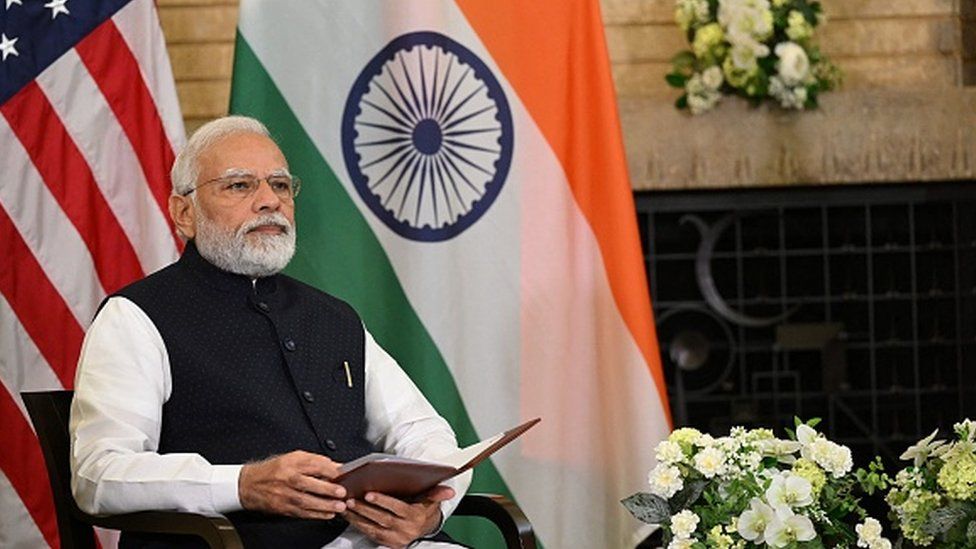
The Wilson Center think tank's South Asia Institute director, Michael Kugelman, added that the two nations had now begun "seeing eye to eye on the broader Indo-Pacific theatre.".
We can already see the US beginning to recognize the value of the western parts of the Indian Ocean region. India's primary concern for many years was the Indian Ocean region, and for good reason. In contrast, the Pacific and the South China Sea were the focus for the US. They are going to start looking at maritime security for the area, he said.
China may not be mentioned specifically in the joint statement, but the two leaders will be talking a lot about how to strengthen their presence in the Indo-Pacific.
But while they share a view on China, they have taken different stances with regard to the conflict in Ukraine.
Delhi has avoided criticizing Russia directly, which analysts attribute in large part to Delhi's reliance on Russian defense imports and its "time-tested ties" with Moscow.
India depends on Moscow for almost half of its defense requirements, but that isn't the only factor. India has always taken pride in adhering to its policy of strategic autonomy, also known as non-alignment. It does not want to be restricted to a particular center of power in the international system, which infuriated Washington diplomats in the early months of the invasion.
However, the US has softened its stance in recent months and has even ignored India's ongoing purchases of Russian crude oil.
By publicly urging an end to the war, India has also made progress.
The different responses to the invasion, Ms. Madan continued, weren't fatal to relations between India and the US.
"When two countries have strategic convergence, they are motivated to manage their differences. Manage their differences, perhaps rather than getting rid of them. And I believe that has happened because of their divergent views on Russia," she said.
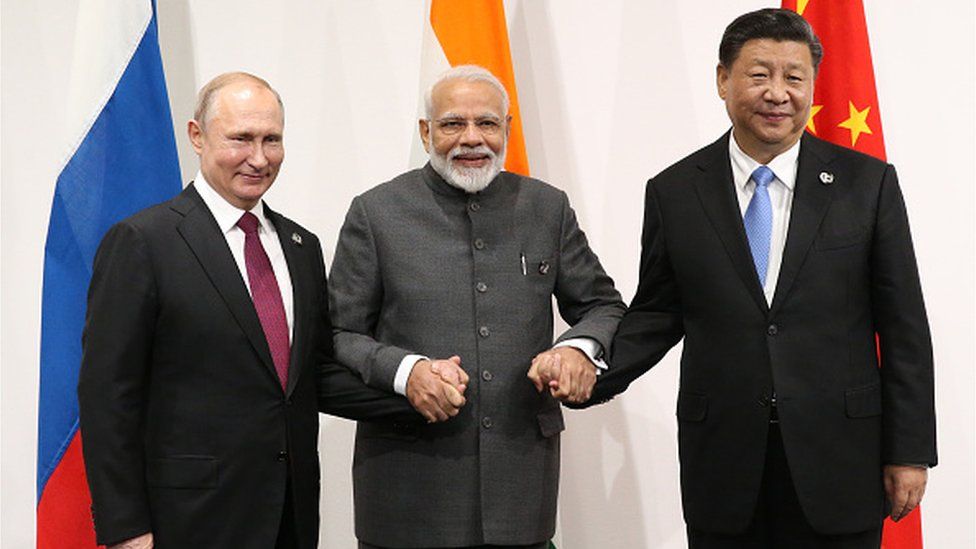
Technology, defense, and global supply chain management are some of the other hot topics under discussion.
The Initiative on Critical and Emerging Technology, as it is known, has been signed by the two nations. Through the agreement, US and Indian businesses and universities will be able to collaborate in a variety of fields, including IT, space, defense, artificial intelligence, education, and healthcare.
More technological cooperation may also be announced by the leaders, particularly in the semi-conductor manufacturing industry, where China is the dominant player.
Another area that has emerged as a significant hub of convergence is defense.
According to data analyzed between 2017 and 2022, India is the world's largest importer of weapons, and Russia continues to account for a sizable portion of it at 45 percent. However, the headline in this case is that Moscow's share used to be 65 percent until 2016; the US sees an opportunity there.
Although Washington's share has increased, it still only amounts to 11 percent, trailing France's 29 percent. There will inevitably be some high-profile defense deals announced, including India's purchase of the tried-and-true MQ-9A "Reaper" drones and a partnership between GE and Indian state-run firms to produce fighter jet engines there.
According to Mr. Kugelman, defense cooperation between the two countries "has come a long way.".
The treatment the US gives to India is not dissimilar from what it gives to many of its allies, one could argue if one looks at recent history, he said.
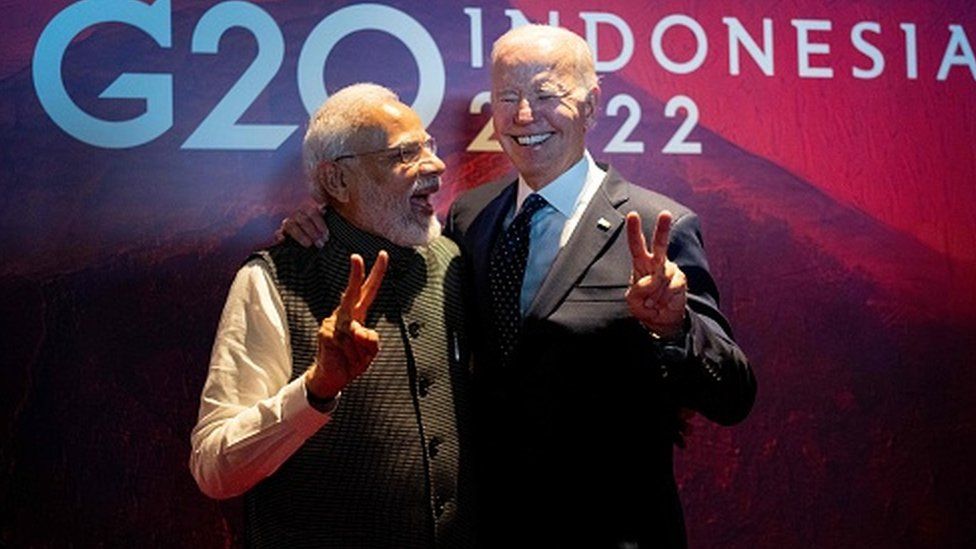
The same can't be expected in trade, but there will probably be some significant announcements in the fields of defense and technology.
The US is currently India's largest trading partner, worth $130 billion, but analysts claim there is still a ton of unrealized potential. Over tariffs and export restrictions, the two nations have had significant disagreements. India has free trade agreements in place with Australia and Dubai, and it is negotiating agreements of a similar nature with other countries like Canada, the UK, and the EU. The leaders may discuss or at the very least lay the groundwork for resolving trade-related issues in the future, but no such deal is anticipated during this visit.
The differences, according to Mr. Kugelman, were not eliminated but rather ignored in favor of more beneficial areas of cooperation.
Despite disagreements between governments, he continued, trade between US and Indian businesses has soared recently.
Trade will undoubtedly come up when the two leaders talk about issues with the global supply chain caused by the pandemic and China's monopoly, even if it isn't their top priority.
"Trade used to be a contentious issue, but I believe the two sides now approach trade policy differently. However, examining issues with the global supply chain requires eventually addressing trade, according to Ms. Madan.
The visit's timing is also intriguing because elections will be held in both nations the following year, at which point the two leaders will be looking for newsworthy headlines to market to their domestic audiences.
Therefore, some major deals that garner headlines are inevitable. In any case, US-Indian relations have always been complicated, with years of mistrust followed by periods of rebuilding and then sporadic flare-ups.
Even though some people in his nation have questioned India's record on human rights under Mr. Modi, Mr. Biden appears committed to fostering positive US-Indian relations.
According to a recent statement by US Secretary of State Anthony Blinken, "We know that India and the United States are big, complicated countries. There is undoubtedly work to be done in order to advance transparency, market access, strengthen our democracies, and realize the full potential of our people. However, this partnership is on an unmistakable and promising course. ".
the YouTube channel for BBC News India. Click . here. to subscribe and watch our explainers, features, and documentaries.

